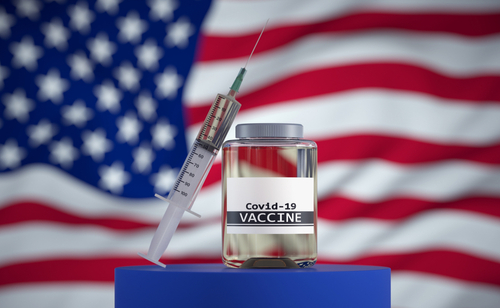
America’s top public health officials earlier Wednesday briefed U.S. Senate subcommittee members on two documents outlining the Trump administration’s strategy to distribute over the next several months safe, effective and free COVID-19 vaccines to Americans as quickly as possible once the Food and Drug Administration (FDA) approves them.
“It’s possible… we could have a vaccine in three to four weeks,” said Dr. Robert Kadlec, Assistant Secretary for Preparedness and Response at the U.S. Department of Health and Human Services (HHS), during the Senate hearing entitled, Department of Health and Human Services Coronavirus Response: A Review of Efforts to Date and Next Steps, held by members of the U.S. Senate Appropriations Subcommittee on Labor, Health and Human Services, Education, and Related Agencies.
“With Operation Warp Speed, we’ve basically worked simultaneously on the clinical trials, as well as the manufacturing of vaccines,” Kadlec explained. “So, if and when — whether that’s two weeks, three weeks, two months or four months — once a clinical trial is complete, and that scientific data is reviewed by the FDA and approved, then we have a vaccine potentially available immediately to use. And that’s the strategy that has been adopted by Operation Warp Speed.”
Kadlec said that he couldn’t predict a timeline beyond that since the clinical trials are ongoing and the FDA will determine the efficacy and safety of a vaccine.
However, a COVID-19 vaccine likely will not be available to the general public until the summer or fall of 2021, said U.S. Centers for Disease Control and Prevention (CDC) Director Dr. Robert Redfield.
“As Dr. Kadlec said, I think there will be a vaccine that will initially be available sometime between November and December, but at a very limited supply and it will have to be prioritized,” Redfield testified. “If you’re asking me when it’s going to be generally available to the American public so we can begin to take advantage of that scene to get back to our regular life, I think we’re probably looking at like late second quarter, third quarter 2021.
“I think the vaccinations will begin in November or December and then pick up in a prioritized way — first responders and those at greatest risk of death — and then eventually that will expand,” said Redfield.
Redfield also pointed out that the CDC is using its expertise in public health preparedness and response, along with its immunization infrastructure, to support Operation Warp Speed in vaccine promotion, distribution, administration, and monitoring. The agency also continues working closely with the Advisory Committee on Immunization Practices (ACIP), a group of medical and public health experts who develop recommendations on the use of vaccines to control disease in the United States, he said.
“While surveillance, testing, contact tracing, and community mitigation interventions are the best tools we have right now, looking to the future, the CDC continues to work to prepare our nation’s public and private health systems to deliver a COVID-19 vaccine once it is available,” said Redfield.
On Wednesday, in fact, HHS released two documents it worked on in conjunction with the CDC and the U.S. Department of Defense (DOD): one provides a strategic vaccine distribution overview, while the other is an interim playbook for how state, tribal, territorial, and local public health programs and their partners should plan and operationalize a vaccination response to COVID-19 within their jurisdictions.
“As part of Operation Warp Speed, we have been laying the groundwork for months to distribute and administer a safe and effective COVID-19 vaccine as soon as it meets FDA’s gold standard,” said HHS Secretary Alex Azar in a statement, referring to the partnership HHS and DOD have with private firms and other federal agencies to coordinate on efforts to accelerate the development, manufacturing and distribution of COVID-19 vaccines, therapeutics and diagnostics.
“This in-depth, round-the-clock planning work with our state and local partners and trusted community organizations, especially through CDC, will ensure that Americans can receive a safe and effective vaccine in record time,” Azar said.
The strategic overview details four tasks necessary for the COVID-19 vaccine program:
- Engage with state, tribal, territorial, and local partners, other stakeholders, and the public to communicate public health information around the vaccine and promote vaccine confidence and uptake;
- Distribute vaccines immediately upon granting of Emergency Use Authorization/Biologics License Application, using a transparently developed, phased-allocation methodology and once the CDC has made vaccine recommendations;
- Ensure safe administration of the vaccine and availability of administration supplies; and
- Monitor necessary data from the vaccination program through an information technology (IT) system capable of supporting and tracking distribution, administration and other necessary data, according to the document.
“CDC is drawing on its years of planning and cooperation with state and local public health partners to ensure a safe, effective and life-saving COVID-19 vaccine is ready to be distributed following FDA approval,” Redfield said. “Through the Advisory Committee on Immunization Practices, CDC will play a vital role in deciding, based on input from experts and stakeholders, how initial, limited vaccine doses will be allocated and distributed while reliably producing more than 100 million doses by January 2021.”




